US department store chain JC Penney has named former Shopko Stores president Jill Soltau as CEO and revealed it will launch a new private brand later this month, tailored towards what it calls “socially connected moms”.
A pilot project to improve the productivity, competitiveness and sustainability of small and medium sized enterprises (SMEs) has launched in Pakistan’s textile and clothing sectors.
Canadian Prime Minister Justin Trudeau has moved to quell concerns a clause in the new US-Mexico-Canada trade pact hinders the country’s freedom to trade with other countries such as China.
The group recently initiated a new performance programme to focus on digitisation and build a leaner businesses structure – a move that resulted in up to 150 job cuts.
On its bye week, USC is 3-2 overall and 2-1 in the Pac-12 Conference. The pair of losses have in effect eliminated the Trojans from contention for the College Football Playoff, and their up-and-down performance has reinvigorated skepticism among fans about the long-term future under Clay Helton, who is now in his third full season.
Despite some of the frustration, the Trojans ended September in similar fashion as last season, when they won the Pac-12 Conference for the first time in the expansion era. Their conference record again sits 2-1 at this point on the calendar. Last fall, USC would win its final six conference games, finishing 8-1 in conference to capture the South Division, earning a trip to the conference championship game, where it prevailed over Stanford.
USC has a pretty clear path toward another division title and returning to Santa Clara. For argument’s sake, let’s say the Trojans need to finish 7-2 to win the Pac-12 South outright. It was 8-1 last season, but was two games ahead of Arizona State. That means they need to win five of their final six Pac-12 games. The schedule goes:
- Oct. 13 vs. Colorado
- Oct. 20 at Utah
- Oct. 27 vs. Arizona State
- Nov. 3 at Oregon State
- Nov. 10 vs. Cal
- Nov. 17 at UCLA
That’s pretty manageable. Not to mention two of the six games are outside the Los Angels area.
To be sure, winning the Pac-12 South isn’t much of a feat. It’s likely the worst Power 5 Conference division this season. However, a return trip to the conference title game for the Trojans would offer a rematch with Stanford or their first matchup with Oregon or Washington since 2016. Coupled with the regular-season finale against playoff-contending Notre Dame, the two-week stretch would serve as a useful barometer of where the program sits in the landscape.
Let’s get to some questions and assess a few more things. In the future, you can send questions to me on Twitter @joeyrkaufman or through an email at jkaufman@scng.com.
What can be done about the penalties. Asking for thousands of Trojan fans
— Joel Shiffman (@joels5370) October 1, 2018
It’s a common topic in the program this week after the Trojans were flagged 18 times at Arizona, their most in a game since 1999.
When coaches and players met for their team meeting on Monday, Helton replayed clips of all penalties to offer corrections. The hope is that the review and added focus would suffice.
Helton has mentioned at several points in recent days that there were three types of penalties: administrative (i.e. offsides or illegal formation), fundamental-technique (i.e. holding) and decision-making (i.e. personal foul for unnecessary roughness).
Among the three varieties, Helton thought that issues such as holding could be corrected in practice. Some of them may be due to inexperience as well. Two of the four personal-foul penalties committed at Arizona were by true freshmen, including cornerback Olaijah Griffin and safety Talanoa Hufanga.
But I’m skeptical this issue will fade much. The Trojans were heavily penalized under Pete Carroll and in more recent seasons as well. Only once this decade has USC not been in the top quarter of the most penalized teams in the Football Bowl Subdivision.
Under Helton, it was the fifth-most penalized team in the nation last season and eighth-most in 2016. So far this season, it’s right in that ballpark. The Trojans are the sixth-most penalized team.
Rewatched the game. The team actually played well for the first 3 quarters plus. Then the wheels came off. Coaches/players have any insight on that?
— Tom T (@TTolman) October 2, 2018
This is a good observation. USC, basically, fell apart in the fourth quarter, the only period in which it was held scoreless. Through the first three quarters, it averaged 7.7 yards per play, including an average of 7.0 yards per rush attempt. In the fourth quarter, they averaged 2.9 yards per play with an average of 2.3 yards per rush attempt.
A few things likely contributed. The Trojans rarely attempted a pass in the fourth quarter, and their running game appears to be aided by the threat of quarterback JT Daniels’ arm talent. They also had costly penalties, including a pair of false starts, setting them back, and even more critical turnovers, twice fumbling in their own territory at the onset of drives. Daniels was strip-sacked on a second-and-10 at their 33-yard line. Tight end Josh Falo fumbled near midfield on the next drive.
Helton has cited turnovers as the biggest inhibitor. The Trojans could have also led 31-0 at halftime had they not botched a snap in the red zone near the end of the second quarter. It’s hard to win on the road when you finish with a minus-2 turnover margin, but the Trojans did and should’ve routed the Wildcats had they not been as sloppy late.
“We got to cut the mistakes out and have a clean game,” Helton said a day after the game. “If you do, you’re going to have a four-quarter game there, and there’s going to be tremendous separation. It didn’t happen because of the mistakes. It’s a learning deal.”
What’s the deal with Daniel Imatorhobhebe (or his brother for that matter). Will we ever see them on the field again?
— ClipperPed (@clipperped) October 2, 2018
Wide receiver Josh Imatorbhebhe has not played this season due to a high ankle sprain, but he has practiced since last week on a limited basis and appeared to make strides in his recovery, including a catch in 7-on-7 drills on Tuesday.
Daniel Imatorbhebhe, the redshirt junior tight end, is more of an enigma, as he has not returned to practice this season due to a nagging hip flexor injury. Helton said the elder Imatorbhebhe has shown progress and has not ruled out his return for later this season.
“I’m crossing my fingers that he gets better each and every week, and my main priority for him is to be healthy and for him to be full speed,” Helton said this week. “We’re committed to that. Whether that’s next week or next year. I’m committed to make sure that he’s comfortable in his body and his own health.”
It’s worth recalling Daniel Imatorbhebhe’s availability from last season. He appeared in the opener against Western Michigan, but was then shut down until he returned for Week 8 at Notre Dame and played the rest of the season. Perhaps a similar path could unfold this fall.
Helton has mentioned a few times that he needs to feel “comfortable,” so I asked if there was at all a mental hurdle for the tight end to overcome.
“Any time that you deal with an injury that holds you out for a period of time, there’s obviously a confidence level that comes with that,” Helton said. “I’ll tell you what, he’s a kid that’s the first one in every day, trying to get better. He works with (Associate Athletic Director for Sports Science and Performance) Dr. (John) Meyer. And I appreciate that. He’s working to try to get back for his brothers. When it’s right, it’s right.”
Whatever happened to USC’s offensive lineman pipeline? Seems like no one after Tyron Smith.
— kingcambie (@kingcambie) October 2, 2018
It’s thin on top talent, an issue I’ve touched on previously. The last time a USC offensive linemen was selected in the first two rounds of the NFL draft was left tackle Matt Kalil, who was selected fourth overall by the Minnesota Vikings in 2012. You can cite a range of factors, most likely poor talent identification or poor player development. The concern isn’t likely to go away either. Although the Trojans feature three senior offensive linemen, it’s possible none will be drafted. The website WalterFootball.com lists 70 offensive tackle, guard and center prospects for next year’s draft. Neither Chuma Edoga, Chris Brown nor Toa Lobendahn are included.
Bubba Bolden did an Instagram post that he is back.
Any updates ?— Traci Mars (@TraciMars) October 3, 2018
Sophomore safety Bubba Bolden, who has been away from the team since Aug. 30, has posted six times on his Instagram page in that span, teasing a potential return to the field. Bolden, though, has not been back on the practice field at any point, and Helton has not commented on when, or if, Bolden might return. As a general rule, I don’t recommend reading much into social-media posts.
Just out of curiosity how is our recruiting class for next year shaping up? Who are some big targets you think we have a legitimate shot in getting and do you think they’ll have an immediate impact to our program?
— michael madden (@michaelmadden08) October 3, 2018
Probably a good time to take a recruiting question. With the bye week, USC’s coaches will be making some recruiting trips this weekend watch some prospects. The recruiting class for 2019 currently ranks 23rd nationally in the 247Sports Composite with 14 commits, including seven four-star prospects and seven three-star prospects. The Trojans typically make a mad dash at the finish line, so this is about on par with previous seasons.
One player to keep an eye on is uncommitted Mater Dei two-way star Bru McCoy, who could make an impact at wide receiver or at linebacker should he opt to play for the Trojans. His former teammates Daniels and Amon-Ra St. Brown certainly have. Earlier this summer, friend of the mailbag Mike Piellucci profiled McCoy for Bleacher Report, and the feature ends with the question of whether Daniels can persuade McCoy to pick USC.
“I’d put money on it,” Daniels told Piellucci.
The Mater Dei pipeline has worked out lately.
Americans across the country on Wednesday were interrupted by an urgent notification on their cell phones. “Presidential Alert,” the message read. “THIS IS A TEST of the National Wireless Emergency Alert System. No action is needed.”
Blasted out by cell towers over a 30-minute period, the message was expected to reach some 225 million people in an unprecedented federal exercise. It was the first time the government use the Wireless Emergency Alerts system, which has alerting capabilities reserved for the office of the president.
Reactions to the alert were swift. #PresidentialAlert became a trending topic on Twitter, where some said the message interrupted their matinee movie showings. Others reported getting the notifications pushed to their smartwatches, as still others took the opportunity to crack jokes. Some said they had received the notification repeatedly, some as often as three to nine times.
A number of iPhone users on AT&T’s network did not receive the notification until they had rebooted their smartphones.
FEMA, AT&T and Apple didn’t immediately respond to a request for comment on the matter.
Many cell phone users may be familiar with alerts they receive as warnings about flash flooding or missing children. But those emergency weather alerts and AMBER alerts can only be sent on a regional or statewide basis, not nationally and all at once.
The presidential alert is designed to let the White House inform the entire country almost instantly of grave public emergencies, such as a terrorist attack or an invasion, according to the Federal Emergency Management Agency. And while Americans can choose not to receive weather and AMBER alerts, they cannot opt out of presidential ones.
Not everyone was pleased about the decision to send out the test alert.
Minutes before the alert was sent out, a federal judge in New York rejected a lawsuit by three people who claimed that the presidential alert violated the First and Fourth Amendments, because Americans could not opt out. The judge explained her decision by saying the claims were too speculative, according to the Associated Press, and that it was motivated by concerns that President Donald Trump sought to turn the wireless emergency alert system into “a second Twitter feed.”
Despite its name, the presidential alert was not issued by Trump directly. But in general, the process calls for the president – or his representative – to authorize FEMA to send an alert on the White House’s behalf.
Before a presidential alert shows up on cellphones, it must be routed to wireless carriers, such as AT&T and Verizon, through an online system called the Integrated Public Alert and Warning System, or IPAWS.
The cell-phone alert is also accompanied by a similar test of the Emergency Alert System, an older system that handles radio and television.
The federal government is required by law to test its alerting systems every three years. FEMA last tested the EAS in 2016 and 2017, and the first wireless emergency alerts were sent in 2012.
Not all cellphones may have received Wednesday’s alert, however. If you weren’t in range of a cell tower or if your phone was switched off, you probably missed the message. That was expected to be the case for only about a quarter of the nation’s cellphones.
That three out of four phones probably received the warning is a reflection of our always-on, technologically connected times. Yet the same technology that has helped connect millions of people also has the potential to cause chaos at Internet speeds.
In January, America’s emergency management technologies made headlines when a state-level official mistakenly sent an alert to Hawaii residents warning them of an inbound ballistic missile attack. The report was false, but it sent Hawaiians scrambling for cover, seeking shelter in gymnasiums, mountain bunkers and even in manholes.
A subsequent investigation by the Federal Communications Commission found that the staffer responsible for the message had thought an attack was truly underway, having misinterpreted a drill.
FEMA officials have said the Hawaii incident played no role in the scheduling of Wednesday’s test.
Previews and predictions for Thurday’s football games:
SANTA ANA VALLEY (3-3 overall, 0-1 league) VS. ANAHEIM (2-4, 0-1)
Where, when: Glover Stadium, Thursday, 7 p.m.
Analysis: The second league is an important one for teams that 0-1 in league. If a team loses the second game, it will be 0-2 and almost certainly must win the final three games of the regular season to qualify for the playoffs. Valley lost its league opener to Katella, by far the best team in the league, 41-7 last week. Anaheim lost to the league’s second-best team Savanna 26-7. Valley might have the offensive firepower advantage in this one.
Winner: Santa Ana Valley
CREAN LUTHERAN (4-2, 0-1) VS. PACIFICA (3-3, 1-0)
Where, when: Garden Grove High, Thursday, 7 p.m.
Analysis: Crean Lutheran made one giant leap to the Empire League from the Academy League coming into this school year. The Saints’ Empire debut last week was a rough one, a 34-7 loss to Valencia. Valencia is the best team in the league, so that’s OK. Pacifica is the second-best team in the league. The Mariners beat Cypress 48-28 in a league opener last week. They rushed for 384 yards and passed only four times in the win. Crean is going to be fine in this league some day, but Pacifica will have matchup advantages especially along the offensive and defensive lines in this game.
Winner: Pacifica
Also Thursday
Games 7 p.m. unless noted
ORANGE COAST LEAGUE
Calvary Chapel (0-6, 0-1) vs. Santa Ana (4-2, 1-0) at Santa Ana Stadium
ORANGE LEAGUE
Savanna (5-1, 1-0) vs. Magnolia (2-4, 0-1) at Western High
NONLEAGUE
No. 7 Villa Park (5-1) vs. El Dorado (2-4) at Valencia High
Godinez (1-5) vs. Fairmont Prep (3-3) at Yorba Linda High
By Jake Coyle, The Associated Press
After Rashida Jones exited Pixar’s “Toy Story 4” in 2017 she noted that the studio, after 25 years in business, had not made a single feature film directed by a woman, calling it “a culture where women and people of color do not have an equal creative voice.”
So when Pixar co-founder and CEO John Lasseter stepped down earlier this year after acknowledging “missteps” in his behavior with employees, he was more than another casualty in the long list of film industry power players toppled by the #MeToo movement. He was a symbol of a Hollywood culture that is dying — or at least under siege.
-
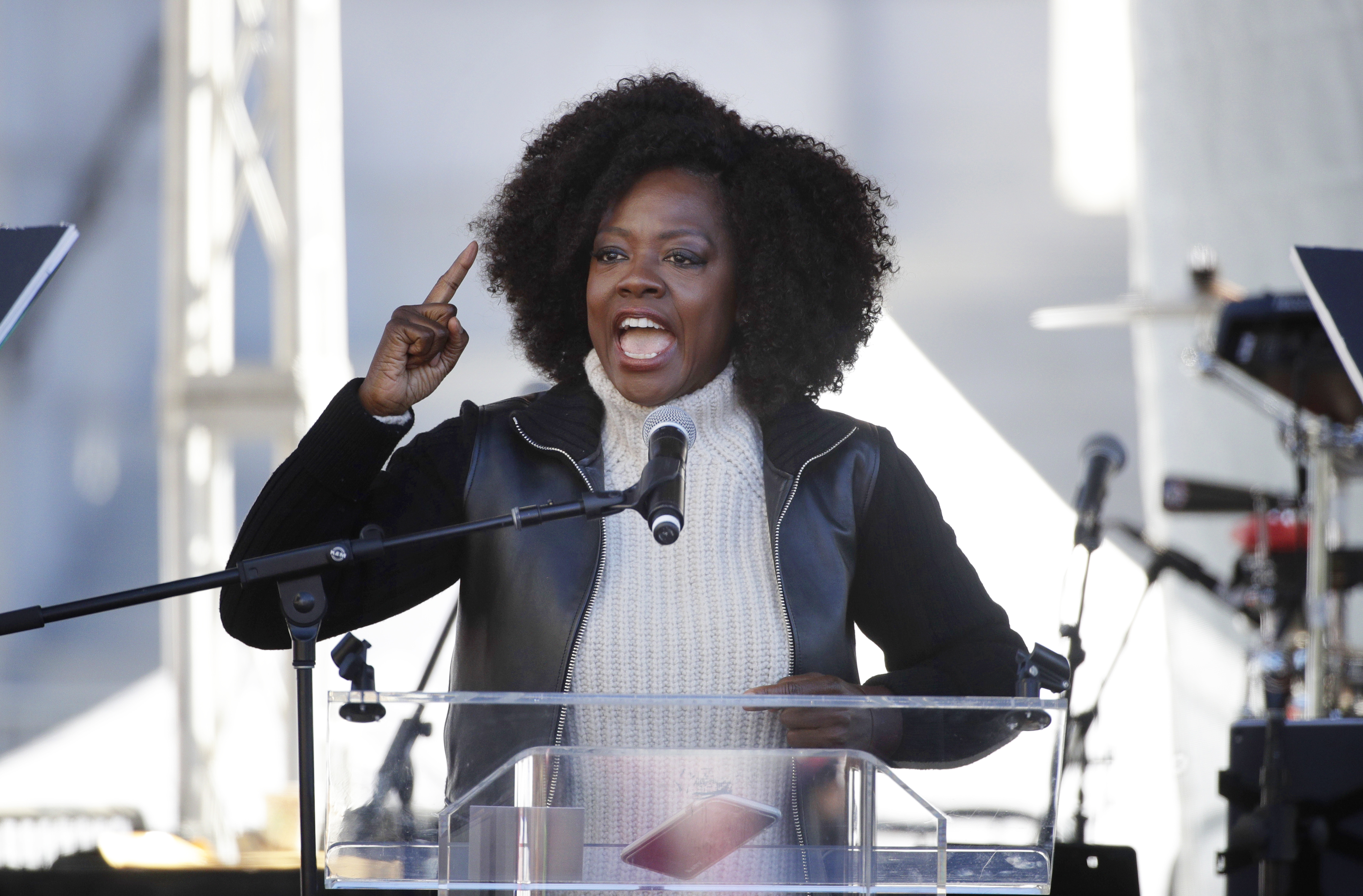
FILE – In this Jan. 20, 2018 file photo, actress Viola Davis speaks at a Women’s March against sexual violence in Los Angeles. A year after the Harvey Weinstein allegations first surfaced, Hollywood is still sifting through the wreckage. Davis says it’s a great thing that people are talking about sexual assault but she fears that people feel like the focus of sexual assault is just on actresses in Hollywood and studio execs like Weinstein. (AP Photo/Jae C. Hong, File)
-
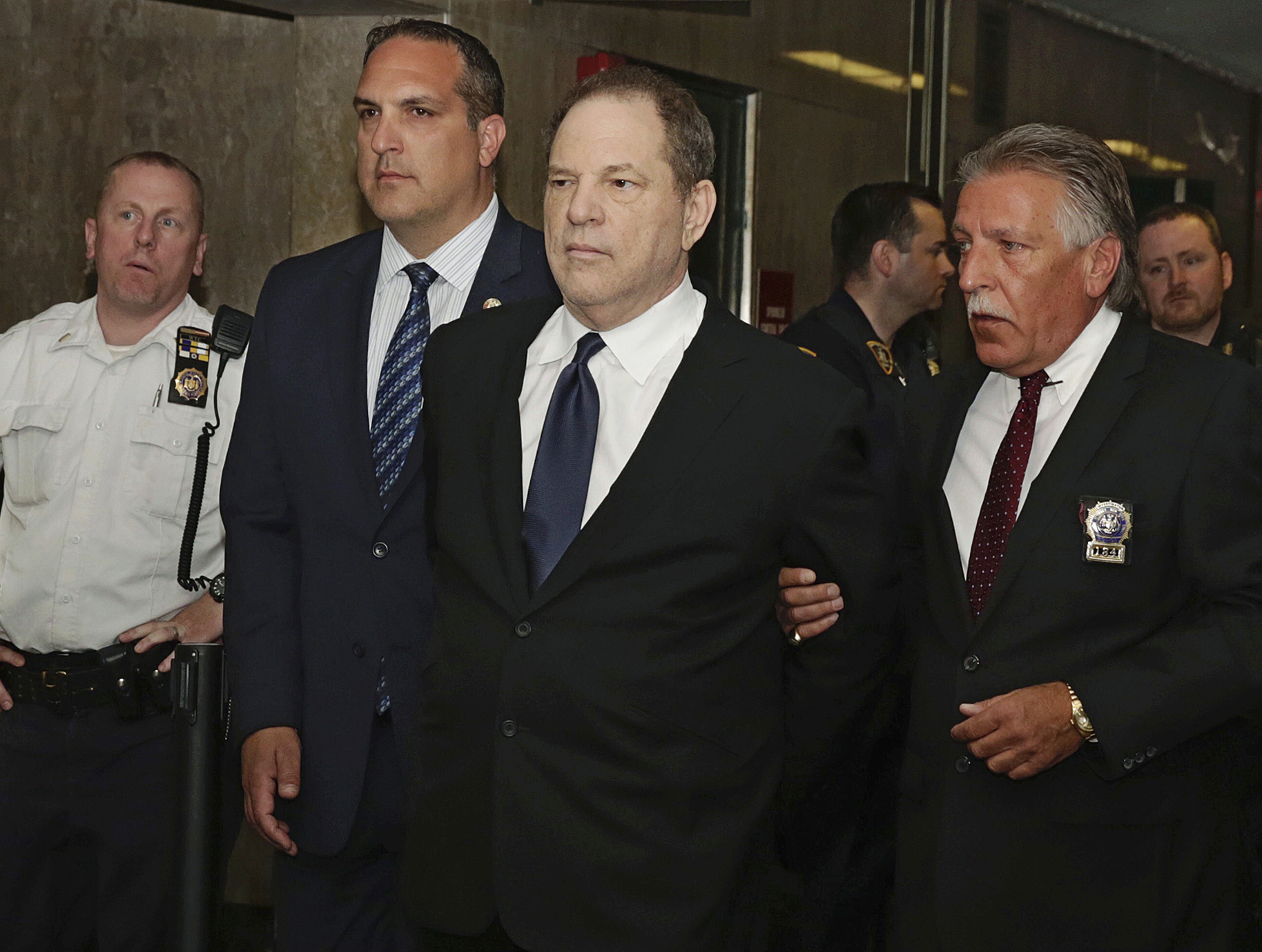
FILE – In this July 9, 2018 file photo, Harvey Weinstein is escorted in handcuffs to a courtroom in New York. Weinstein, who was previously indicted on charges involving two women, was due in court for arraignment on charges alleging he committed a sex crime against a third woman. For many, the Weinstein case laid bare the movie industry’s systemic gender inequalities. Twelve months later, the dust isn’t anywhere close to settling. (AP Photo/Richard Drew, File)
-
SoundThe gallery will resume inseconds
-
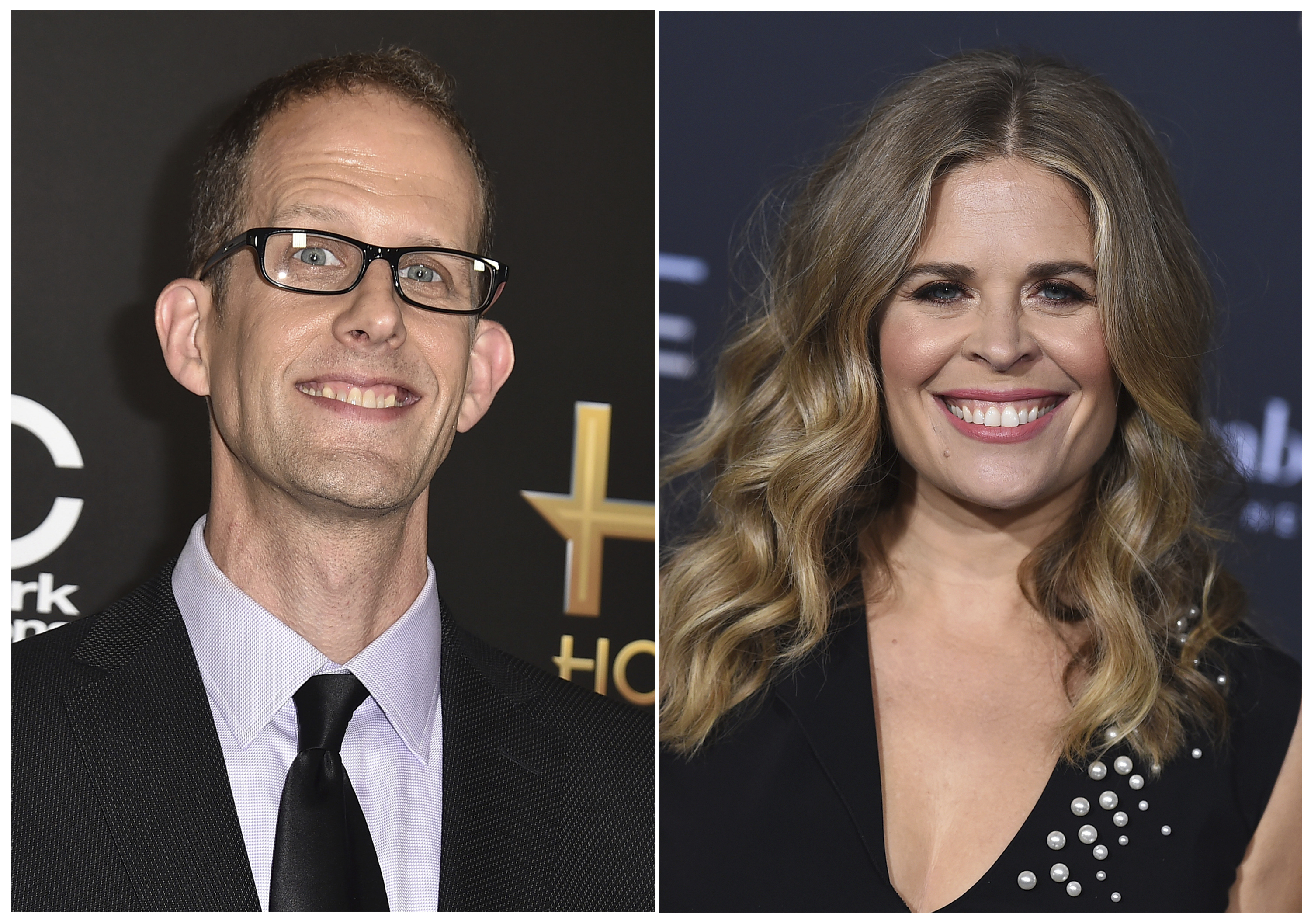
This combination photo shows Pete Docter at the Hollywood Film Awards in Beverly Hills, Calif., on Nov. 1, 2015, left, and Jennifer Lee at the world premiere of “A Wrinkle in Time” in Los Angeles on Feb. 26, 2018. When Pixar co-founder and chief creative officer John Lasseter stepped down earlier this year after acknowledging “missteps” with his behavior with employees, he was replaced with Docter and Lee. (Photos by Jordan Strauss/Invision/AP, File)
-

FILE – In this Oct. 14, 2017 file photo, Rashida Jones arrives at the 15th annual Hammer Museum Gala in Los Angeles. A year after the Harvey Weinstein allegations first surfaced, Hollywood is still sifting through the wreckage. For many, the Weinstein case laid bare the movie industry’s systemic gender inequalities. When Jones and her writing partner Will McCormack exited Pixar’s “Toy Story 4,” Jones noted the animation studio’s poor record of female filmmakers. (Photo by Jordan Strauss/Invision/AP, File)
-
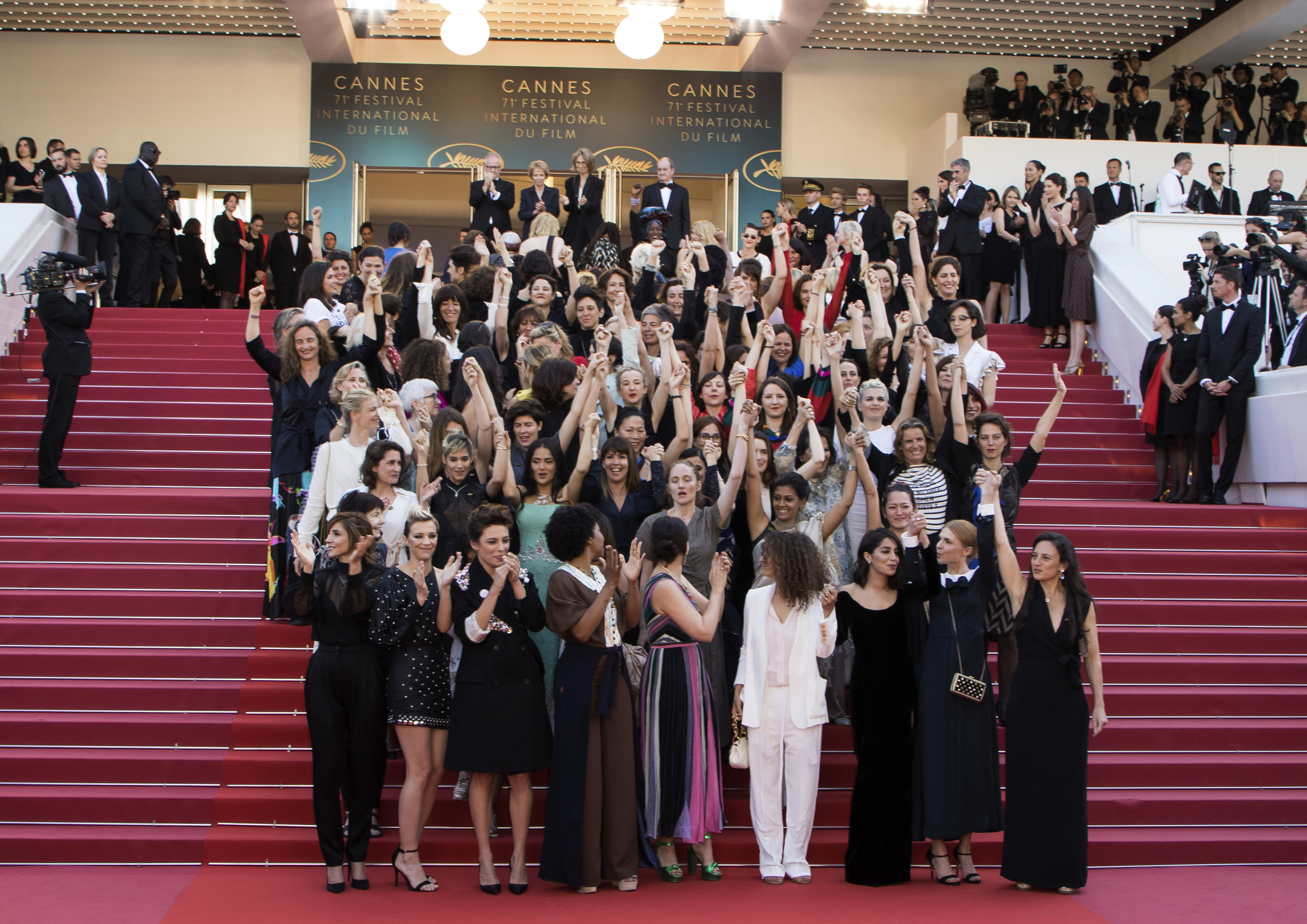
FILE – In this May 12, 2018 file photo, 82 film industry professionals stand on the steps of the Palais des Festivals to represent, what they describe as pervasive gender inequality in the film industry, at the Cannes Film Festival in Cannes, France. The #MeToo movement has gone far beyond the movies, but Hollywood remains ground zero in a cultural eruption that began 12 months ago with the revelations about Harvey Weinstein. (Photo by Vianney Le Caer/Invision/AP, File)
-
-
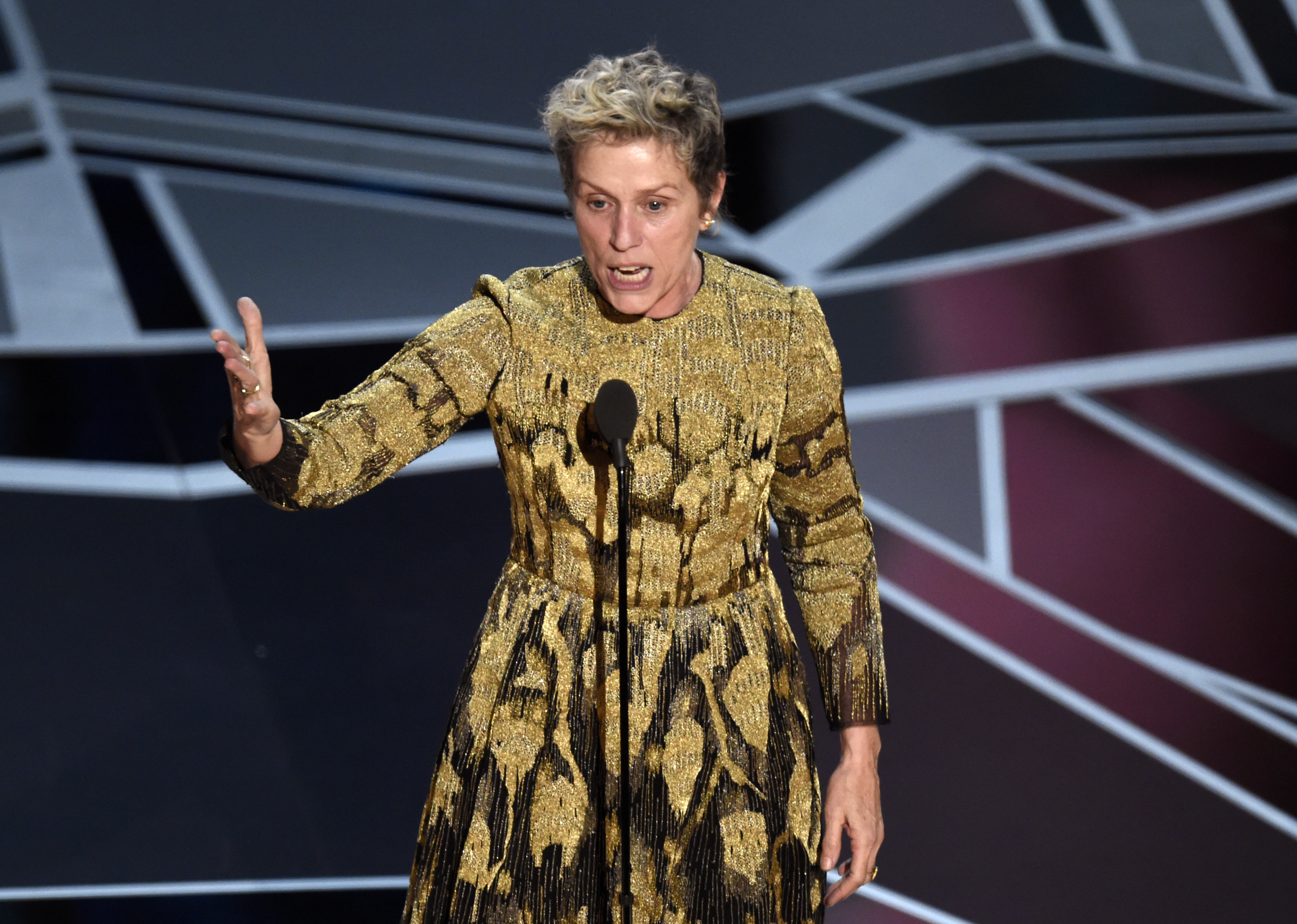
FILE – In this March 4, 2018 file photo, Frances McDormand talks about inclusion riders as she accepts the award for best performance by an actress in a leading role for “Three Billboards Outside Ebbing, Missouri” at the Oscars in Los Angeles. A year after the Harvey Weinstein allegations first surfaced, Hollywood is still sifting through the wreckage. For many, the Weinstein case laid bare the movie industry’s systemic gender inequalities. Last month, Warner Bros. became the first major studio to make a similar pledge. Many prominent film festival directors have also signed agreements to push their executive boards to gender parity. (Photo by Chris Pizzello/Invision/AP, File)
Expand
“These giant, multi-billion-dollar companies, they all need a makeover,” Jones now says. “And I think people are starting to recognize that. To me, that is a victory. Brave people have come forward and made this whole machine start to question itself.”
In the year since sexual assault allegations surfaced against Harvey Weinstein, Hollywood has been soul-searching. The Weinstein case — along with those of Kevin Spacey, CBS’ Les Moonves, Amazon Studios’ Roy Price and many others — laid bare the painful reality for countless women in a movie industry where gender inequality was systematic and pervasive.
The #MeToo movement has gone far beyond the movies, but Hollywood remains ground zero in a cultural eruption that began 12 months ago with the Weinstein revelations, published by The New York Times and The New Yorker. Through interviews with actresses, filmmakers, producers and others, The Associated Press sought to assess whether it is a palpably different place today than a year ago.
“Definitely there’s been a seismic shift,” says Carey Mulligan, the British actress. “I feel like if I was walking down the street and someone said something or did something outside the bounds of appropriate, I would feel so much more empowered to tell them to f— off while before I probably wouldn’t. Those sort of gray area things are now no longer gray areas.”
Mulligan, who played an early 20th century women’s rights activist in 2015’s “Suffragette” and has herself been vocal about Hollywood’s pay gap, says that in every job she’s had for the last year, there’s been a well-known code of conduct on set. She’s optimistic that more change is coming.
Researchers at the University of Southern California’s Annenberg Inclusion Initiative have not yet found any marked difference in female representation on screen, behind the camera or in the boardroom. More data after the end of the year will give a clearer picture of 2018, but the previous 20 years have shown almost zero change. At least anecdotally, studios and production companies are more aggressively hunting for female filmmakers. Salma Hayek has said her production company has been struggling to find female writers and directors. They’re all already booked.
“Everybody’s looking for their female content,” says Jones, whose documentary “Quincy” was recently released by Netflix. “They’re starting to understand that content that’s created by and shepherded by women and people of color is super underrepresented in the business. And everybody’s scrambling to try to fix that.”
Measuring cultural change in a far-flung, $50 billion industry is difficult. Many of the epicenters of the movie business — red carpets, film festivals, award shows — have struck a different tone in the wake of Weinstein. While “who are you wearing” has steadily crept back into the red-carpet lexicon a year after women wore black to the Golden Globes, protest has engulfed many of the frothiest events on the movie calendar, from the Oscars to the Cannes Film Festival .
But some see a limit to what such demonstrations can accomplish.
“It’s a great thing when you’re on the red carpet and people are talking about sexual assault. At least it’s out in the open,” says actress Viola Davis. “My fear is that people feel like the focus of sexual assault is just on actresses in Hollywood and studio execs like Weinstein.”
She worries about the movement becoming limited to “outing the men, putting them in the court of public opinion and just destroying their careers. It’s way bigger than that. One out of every 4 women — and there’s some statistics that say it’s 1 out of 3 — will be sexually assaulted by the time they’re 18.”
Like many revolutions before it, #MeToo has sought to codify permanent changes. The Academy of Motion Picture Arts and Sciences instituted a code of conduct and booted not only Weinstein but Bill Cosby and Roman Polanski.
In addition, “inclusion riders” — contractual agreements to try to hire diverse casts and crews — have proliferated. Last month, Warner Bros. became the first major studio to make a similar pledge. Many prominent film festival directors have also signed agreements to push their executive boards to gender parity.
In an attempt to abolish the “casting couch” culture that Weinstein allegedly exploited, The Screen Actors Guild created guidelines — supported by the producers’ guild — instructing producers and executives to refrain from holding professional meetings in hotel rooms and homes. It urged members not to agree to meetings in “high-risk locations.”
“People have been talking for decades about how terrible the casting coach is. Even with that knowledge, it was still going on. There was nothing concrete, written down saying: unacceptable,” says Gabrielle Carteris, president of SAG-AFTRA. “Us putting that in a guideline was so empowering for members because we’ve all been put in that situation. And I really want to salute the studios because we did it really in partnership with them.”
The guidelines will soon be expanded to establish rules around nudity on set.
“The kind of work we do is so intimate. It’s different than being a lawyer or a doctor or a dentist,” Carteris says. “But there are rules for workers in this country, and it was really important to define what those rules are.”
The movie business still lacks a single, industry-wide reporting system for sexual harassment and assault, though a committee led by Anita Hill is working to create one. Time’s Up , which is spearheading much of the pressure put on Hollywood, has also amassed a $21 million legal-defense fund for women who suffer from harassment and assault at work in any industry.
Yet with everything that has happened in the last year, most observers say not nearly enough has been done to address long-term inequalities in Hollywood.
“It feels like we’re moving in the right direction, but women and minorities are such a tiny percentage of this industry,” says filmmaker Nicole Holofcener, whose latest is “The Land of Steady Habits.” ”I open up my Director’s Guild magazine, and it has films that the DGA is screening and sometimes there’s not one woman, not one black person. They are all white male directors and my jaw is on the floor. I think: How can this still be?”
Holofcener has mixed feelings about all the attention on gender.
“It’s a good thing to highlight our work, but I wish we didn’t have to,” she says.
Julia Roberts, who was once among the highest paid movie stars, agrees.
“Every year that it’s ‘the year of the woman,’ let’s just have it always be the year of the artists,” Roberts says. “If we have to keep spotlighting the gender of this and the gender of that, we’re kind of blowing it.”
There are plenty of others in Hollywood who have misgivings about #MeToo. Sean Penn derided what he called the movement’s “salacious” quality, saying its spirit is “to divide men and women.”
But as the recent re-editing of “The Predator” showed, some behavior remains a work-in-progress. Shane Black called his casting of an old friend, Steven Wilder Striegel, a previously convicted sex offender, an “irresponsible” decision . Striegel was cut the from the film only after actress Olivia Munn alerted 20th Century Fox to Striegel’s past.
Kirsten Schaffer, executive director of the advocacy group Women in Film , believes that the path to ending harassment is through parity. Evidence backs her up.
“The more women we have in leadership positions, the less likely the incidents of harassment. So we have a lot of work to do on that front,” Schaffer says.
“We’ve been living in a sexist, racist society for hundreds of thousands of years,” she adds. “We’re not going to undo it in a year.”
The Clippers will hold an open public practice Monday at the Galen Center on the USC campus (3400 S. Figueroa Street Los Angeles). Doors will open to fans at 5:45 p.m., with practice set to conclude at 7 p.m.
As a bonus, the first 2,000 fans will receive a free Clippers tote bag, and the first 500 fans will receive a coupon for a free Chick-fil-A sandwich. The Clippers Spirit dance team will perform and Chuck the Condor is scheduled to make an appearance.
There is no charge to attend, but fans must RSVP by visiting clippers.com/openpractice.
A campaign video filmed in Hollywood and a tacky karaoke bar on the outskirts of Tokyo served as the perfect backdrop for this fun, crafty collection, with the models sped up and slowed down.
The signature inventiveness of Junichi Abe, an experienced patternmaker, was in fine form with offbeat touches like an accumulation of fabric textures on a skirt, the haphazard embroidery on lace collars of sweaters, and lines of tape used to join layers to garments — including a red tulle layer on a black T-shirt — or rework volumes, giving a DIY spin.
A series of triple-layered hi-tech anoraks mixing colors and materials to create depth were terrific. More cute in mood were the colored marled knits with contrast lace accents.
The designer also revisited traditional checks in polyester on neo-geek shirts, with oversized shapes used throughout the collection.
Follow WWD on Twitter or become a fan on Facebook.Read More…